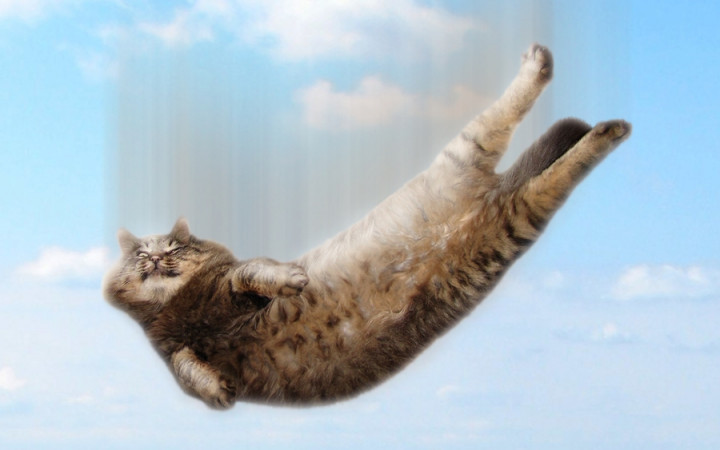Today’s Wonder of the Day was inspired by Abby from Powell, OH. Abby Wonders, “Do cats always land on all four feet?” Thanks for WONDERing with us, Abby!
The cat slowly made its way along the edge of the top of the bookcase. Silently stalking its prey, the kitty waited until just the right time before pouncing. Unfortunately, the bird in its sights was outside the window. After bouncing off the window, the cat yelped, twisted in mid-air, and still managed to land safely on all four feet!
Have you ever seen something like this happen? If you've spent much time around cats, you've probably heard the old adage that cats always land on all four feet when they fall. You may have even seen this happen once or twice. Don't you wish you could fall with such style and grace?
Can it be true? Do cats possess some type of magical ability to defy the laws of gravity? Do their paws contain special elements that make them more attractive to Earth's gravitational pull?
Scientists who have studied cats will tell you that they aren't magicians. They also don't have special gravitational paws. They do, however, have bodies with some interesting characteristics that can explain the phenomenon of landing on all four feet.
The falling behavior of cats has been noticed for thousands of years. It wasn't until science and technology allowed researchers to capture video of cats falling, though, that their secret was discovered. Examining slow-motion video footage allowed researchers finally to understand how cats land on their feet when they fall.
Researchers found that cats possess an innate ability that they call the righting reflex. The righting reflex allows cats to determine up from down quickly during a fall and to maneuver their bodies into position to land on all four feet.
For example, when a cat falls, it uses either its eyesight or its balance system in its inner ear (called the vestibular apparatus) to determine which way is up. Cats have an incredible sense of balance, and their highly-flexible backbones allow them to rotate their upper bodies quickly to face downward. Their lower bodies then follow along, allowing them to land on all four feet.
Cats have a few other features that help them land consistently on all fours. Their small bodies are able to twist quickly in the air, and their light bone structure and thick fur helps to soften the impact of a fall. Some cats even stretch out a bit during a fall in order to create more air resistance to slow their fall.
Cats do not always land on all four feet, unfortunately. Studies have shown that falls of 12 inches or less will not necessarily give cats enough time to right themselves in order to land on all four feet. When falls exceed 12 inches, though, it's a pretty good bet that a cat will land on its feet.
Landing on its feet from a fall doesn't mean that cats cannot be injured, though. Depending upon the height of the fall, cats can still suffer injuries from impact even when they land on all four feet. Veterinarians can tell you all sorts of stories about broken legs and other injuries suffered by cats in falls.




